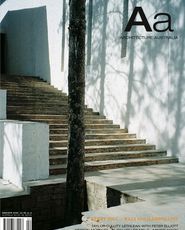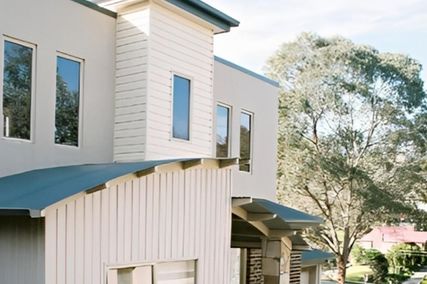THERE AND HERE
Once again it has been a privilege to compile the coverage of the RAIA Gold Medal – this year it was a pleasure to become more familiar with the elegant and thoughtful work of Kerry Hill, and to catch glimpses of his recent projects that are yet to be fully published. The awarding of the medal to Kerry Hill also raises a range of interesting questions about Australian architecture and its relationship with international architectural culture. As Philip Goad points out in his essay celebrating Hill’s oeuvre in this issue, Australian architecture is not bound by the geographical borders of this country. There is a substantial cohort of architects and academics from this part of the world spread across the globe, while architects based in Australia are now working internationally on an unprecedented scale. So, in addition to enticing us to consider and enjoy Hill’s significant body of work, this medal invites us to extend our idea of what constitutes Australian architecture, of what “local” is and what “international” is, and how these interact. This is amplified by one of the characteristics of Hill’s work, the exploration of the conjunction of “region” and architecture.
However, as Erwin Viray comments, Hill’s influence extends far beyond South- East Asia, where much of his work is located, or Australia – his influence is on architecture per se. But it is perhaps his close attention to the regions he finds himself working in that has, in part, enabled him to participate extensively in international architectural culture. And in turn, this has allowed an expansion of the geographical locations of his work – there are now projects in Croatia, Japan and Bhutan, among other places, and a recent competition win in Perth.
Relationships between architecture “here” and architecture “there” have always been more intricate and more complex than is often allowed. Here in the Antipodes we are not at the end of some slow stream of influence that trickles out from metropolitan centres to the periphery. We are embedded in the give and take of architectural ideas and in the production of architectural culture.
The work of Kerry Hill Architects, its many locations, and its reception both here and there, makes this particularly clear.
Such complexity of engagement has long been the case. As David Saunders outlines in a 1977 Architecture in Australia article “… So I Decided to Go Overseas”, Antipodeans had quite some influence on British architecture early last century. He suggests that in the year 1930, the English Modern Movement was, “apparently, entirely represented by seven men, and only two of them were Englishmen”. The others were Australian Raymond McGrath, New Zealanders Amyas Connell and Basil Ward (who, in partnership with Englishman Colin Lucas, formed Connell Ward and Lucas), Canadian Wells Coates, and Russian Berthold Lubetkin. So, prior to the arrival of emigres from Europe in the mid 1930s, Modernism in England was driven by colonials. The entwined nature of this particular historical situation, and others like it, are worth remembering as we conceptualize our current environment.
The international networks that these architects of the 1920s and 30s worked within were partly those of Empire. The networks that Hill, his expatriate contemporaries, and architects in Australia operate in are more diverse, both conceptually and geographically (as the recent launch of RAIA International in Hong Kong also indicates). Both these situations allow us to reflect on the complex interdependence of “here” and “there” and the role that architects from this part of the world have played in the development of architecture as a whole. In the work of Kerry Hill distinctions between “here” and “there” start to break down, while the “here” of each project is also reinforced. Hill’s oeuvre and mode of practice encourages us to develop new conceptual frameworks through which we might think about “Australian” architecture. JUSTINE CLARK















